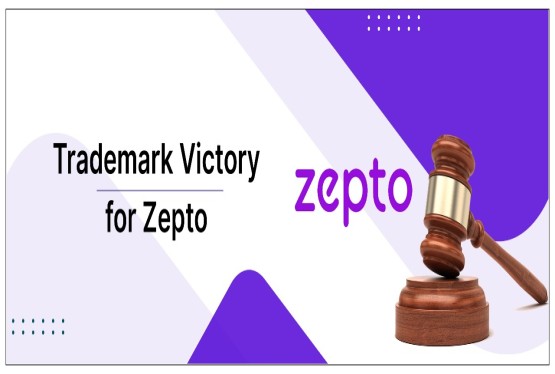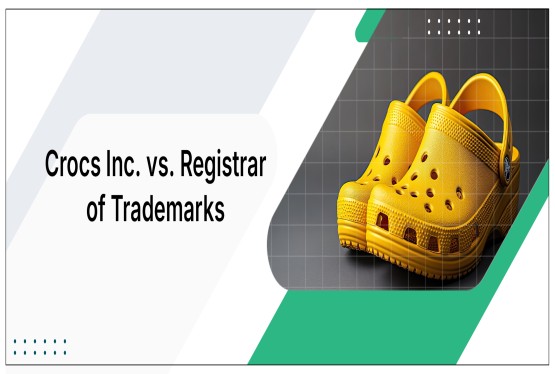Innovative marketing techniques and creative designs come together in the Indian soft toy sector, which is a growing industry for creativity and commerce. Protecting intellectual property (IP) is important for companies looking to create a distinctive brand identity and keep a competitive edge in this highly competitive market. Many facets of intellectual property legislation in the Indian soft toy industry are examined in this article, which also looks at the strategic use of trade dress, patents, copyrights, trademarks, and design rights to protect creative assets and promote expansion. Importantly, we will also go over the significance of copyright and trademark registration in obtaining these essential safeguards. We will examine pertinent laws, court rulings, and useful IP management techniques, discussing the difficulties that companies encounter and providing advice on negotiating the intricacies of IP protection in this ever-changing industry.
Trademarks: Protecting Brand Identity
A strong brand identity is vital for soft toy businesses, enabling consumers to distinguish one company's products from another. Trademarks, governed by the Trademarks Act, 1999, play a pivotal role in protecting brand names, logos, taglines, and even specific product packaging in the soft toys industry. By registering a trademark, businesses acquire exclusive rights to use and enforce the mark.
Example: A soft toy company like “PlayBuddy” can trademark its name and logo, preventing others from marketing their products under a deceptively similar identity.
Relevant Case Law: In K.M. Multani v. Channmal Soni, the court emphasized the importance of protecting a business's goodwill and reputation through trademark enforcement. Similarly, the Delhi High Court, in Amritdhara Pharmacy v. Satyadeo Gupta, underscored the significance of preventing confusion in the minds of consumers when assessing trademark infringement.
Copyright: Protecting Artistic and Literary Works
Soft toys often feature original artistic designs, unique patterns, and even literary elements such as accompanying stories or character profiles. Copyright protection under the Copyright Act, 1957 extends to these creative elements, safeguarding the intellectual effort behind a product.
Statutory Reference: Under Section 13(1) of the Copyright Act, artistic works such as sketches or patterns used in soft toy designs qualify for copyright protection.
Case Example: In India TV Independent News Service Pvt. Ltd. v. Yashraj Films Pvt. Ltd., the court highlighted the need for originality and creativity in determining copyright infringement. This principle is applicable to soft toys with unique artistic designs, protecting them from unauthorized copying.
Design Protection: Safeguarding Aesthetic Features
Soft toys are often distinguished by their external appearance, which includes unique shapes, colors, and patterns. Such aesthetic features are protected under the Designs Act, 2000, provided they are novel and have not been disclosed to the public prior to registration.
Importance in the Industry: Businesses can register their designs to gain exclusive rights to use them, thereby preventing imitation by competitors. For example, a toy manufacturer designing a teddy bear with a distinctive pattern of stars and stripes can register this design to safeguard their commercial interest.
Relevant Precedent: In Dart Industries Inc. v. Techno Plast, the court clarified that a registered design's originality and distinctiveness are the key criteria for protection. Similarly, in Gopal Glass Works Ltd. v. Assistant Controller of Patents and Designs, the court upheld the importance of novelty in design registration.
Patents: Protecting Innovations in Manufacturing and Technology
While not as prevalent as trademarks and designs, patents can protect innovative manufacturing processes, mechanisms, or materials used in soft toy production. For example, a company inventing a new stuffing material that is hypoallergenic and eco-friendly may seek patent protection under the Patents Act, 1970.
Statutory Reference: Section 2(1)(j) of the Patents Act defines an invention as a new product or process involving an inventive step and capable of industrial application.
Case Example: In Biswanath Prasad Radhey Shyam v. Hindustan Metal Industries, the Supreme Court clarified the criteria for novelty and inventive steps in granting patent protection, principles that are equally applicable to innovations in the soft toys business.
Trade Dress: Protecting the Overall Look and Feel
The concept of trade dress, which extends beyond trademarks to cover the overall visual impression of a product, has gained prominence in the soft toys business. Trade dress protection ensures that a competitor cannot mimic the distinctive packaging, color schemes, or presentation of a soft toy product to mislead consumers.
Legal Basis: Although trade dress is not explicitly defined under Indian law, courts have recognized it as part of the Trademarks Act, 1999.
Example: A soft toy brand with a signature packaging style, such as pastel-colored boxes with a bow, can claim trade dress protection against similar imitations.
Enforcement and Remedies
Enforcing IP rights is essential for ensuring fair competition and discouraging counterfeiting in the soft toys market. The remedies available in India include:
1. Injunctions: Courts may grant interim or permanent injunctions to prevent continued infringement.
2. Damages or Account of Profits: IP owners can claim compensation for losses incurred due to infringement.
3. Customs Intervention: The Customs Act, 1962, allows IP holders to register their rights with customs authorities to prevent the import of counterfeit goods.
Case Example: In Shree Vardhman Rice & General Mills v. Amar Singh Chawalwala, the court awarded damages for trademark infringement, setting a precedent for financial compensation in IP disputes.
Challenges in IP Protection for Soft Toys
While IP laws provide robust protection, businesses in the soft toy industry often face challenges, including:
1. Counterfeiting: The market is flooded with counterfeit products that dilute brand value.
2. Lack of Awareness: Many small-scale manufacturers and artisans are unaware of the benefits of registering their IP.
3. High Costs: The process of registering and enforcing IP rights can be costly and time-consuming.
Strategies for IP Management
To mitigate these challenges, soft toy businesses can adopt the following strategies:
1. Early Registration: Register trademarks, designs, and copyrights promptly to secure legal protection.
2. IP Audits: Conduct regular audits to identify and protect unregistered intellectual assets.
3. Awareness Campaigns: Educate employees and stakeholders about the importance of IP rights.
4. Monitoring and Enforcement: Actively monitor the market for infringements and take swift legal action when necessary.
Conclusion
Intellectual property law serves as a vital tool for fostering creativity and innovation in the soft toys business in India. By leveraging trademarks, copyrights, designs, patents, and trade dress protection, businesses can safeguard their unique creations and establish a strong market presence. While challenges persist, proactive IP management strategies can help mitigate risks and ensure long-term success in this highly competitive industry.
As the soft toy industry continues to evolve, staying abreast of legal developments and adopting best practices in IP protection will be essential for maintaining a competitive edge in the Indian and global markets.
FAQs
Q1. What are the primary types of intellectual property protection available for soft toy businesses in India?
Ans. The main types include trademarks (for brand names and logos), copyrights (for artistic designs and literary elements), design registrations (for aesthetic features like shapes and patterns), patents (for innovative manufacturing processes or materials), and trade dress (for the overall look and feel of a product or its packaging).
Q2. Why is trademark registration important for a soft toy company?
Ans. Trademark registration protects a company's brand identity, preventing others from using similar names or logos that could confuse consumers. This allows the company to build brand recognition and goodwill, and gives them exclusive rights to use and enforce their trademark.
Q3. How does copyright protect the creative aspects of soft toys?
Ans. Copyright protection safeguards the original artistic designs, patterns, and any accompanying literary works (like stories or character profiles) associated with soft toys. This prevents unauthorized copying or reproduction of these creative elements.
Q4. What are some common challenges faced by soft toy businesses in protecting their IP?
Ans. Common challenges include widespread counterfeiting, a lack of awareness among small-scale manufacturers about IP rights, and the potentially high costs associated with registering and enforcing IP.
Q5. What strategies can soft toy businesses employ to effectively manage their intellectual property?
Ans. Businesses should prioritize early registration of trademarks, copyrights, and designs. Regular IP audits can help identify and protect unregistered assets. Raising awareness about IP rights among employees and stakeholders is crucial. Finally, active market monitoring and swift legal action against infringers are essential for protecting IP.






























_(b)_of_the_Trademark_Act,_1999_(1)_crop10_thumb.jpg)



_crop10_thumb.jpg)




























_crop10_thumb.jpg)
_crop10_thumb.jpg)






_crop10_thumb.jpg)








_crop10_thumb.jpg)



_crop10_thumb.jpg)





























_crop10_thumb.jpg)

















_crop10_thumb.jpg)






_crop10_thumb.jpg)












































































































































_crop10_thumb.jpg)



































_crop10_thumb.jpg)












_crop10_thumb.jpg)































